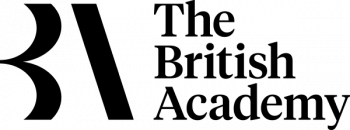
Research: The Emergence of Literacy in Very Young Children
Building a picture of young children’s everyday language and literacy practices, and how these are influenced by place, objects and things.
Project summary
Research summary
- October 2017 to March 2021
This project looks at children aged between one and three years, and their literacy practices in ordinary, everyday community contexts. These contexts include community playgroups, parks, farms, outdoor spaces, and a museum.
The research is an ethnography, meaning that the researcher has spent the last two years in community early childhood spaces, observing and learning from the children and families who use them. Drawing on feminist, posthuman and New Materialist work, the study employs ethnographic and arts-based methods to build a picture of how young children employ and combine different methods of communicating. This included sounds, gestures and movements, in different contexts of their everyday lives.
Why is this research important?
A great deal of anxiety surrounds the development of young children, and increasingly, investments are being made to try to support families and ensure children get the best start in life. However, the lives of children aged between one and three years and their families in everyday contexts is surprisingly under-researched. A better understanding of children’s everyday lives will enable policy and practice to support families more effectively.
In addition, a great deal of current research on children’s language development focusses on the role of adult humans. In this country (but not in all countries), parents are often told “talk to your baby”. Whilst there is nothing wrong with talking to your baby, the emphasis on the role of adults means that other important aspects of young children’s lives have been overlooked. How might a place, or a toy, or a pet, or the weather, or a pile or sand or jug of water, influence how and what children choose to communicate about?
Thus, this research project is important because it addresses important gaps in research by:
- Providing a better understanding of the everyday lives of young children and their families and how literacy and language fits into this.
- Examining the role of non-human things (such as places and objects) in how young children are inspired to communicate.
The overall aim of the research is to provide a more complete account of children’s literacies, enabling deeper exploration of the role of materiality and place in literacies.
A resource for educators
- Download the More-Than-Human Literacies report
An account of how and what children do cannot be separated from an account of places, objects, atmospheres and bodies with which they occur. Literacy and language practices are produced not by an individual, but by a coming together of certain situations, contexts and material discursive entanglements.
An account of how and what children do cannot be separated from an account of places, objects, atmospheres and bodies with which they occur. Literacy and language practices are produced not by an individual, but by a coming together of certain situations, contexts and material discursive entanglements.
Research outputs
Research outputs
Academic papers
- Hackett, A. MacLure, M. and MacMahon, S. (2020), Reconceptualising early language development: matter, sensation and the more-than-human. Discourse: Studies in the Cultural Politics of Education. Online first.
- Hackett, A. MacLure. M. and Pahl, K. (2020), Literacy and language as material practices: re-thinking social inequality in young children’s literacies. Guest editorial Journal of Early Childhood Literacy.
- Truman, S. Hackett, A. Pahl, K. Escott, H. and McLean Davies, L. (2020). The Capaciousness of No. Affective Refusals as Literacy Practices. Reading Research Quarterly.
- Hackett, A. and Rautio, P. (2019), Answering the World. Young children’s running and rolling as more-than-human multimodal meaning making. International Journal of Qualitative Studies in Education, 32 (8).
Other resources
- Hackett, A. (in press) More-than-human Literacies in Early Childhood. Bloomsbury.
Research team
Research team
Lead researcher
Collaborating with:
-
parents and families
Photo credit: Steve Pool
Funding
With funding from

The British Academy
Contact
Contact us
For general enquiries about the Education and Social Research Institute’s children and childhood group, you can contact research group lead Prof Rachel Holmes.




